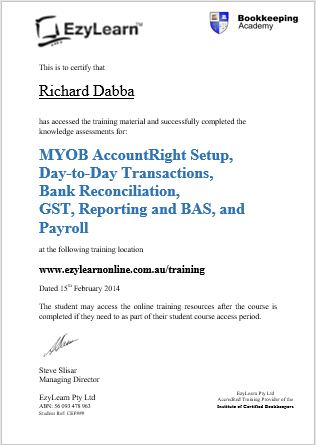Contents:


For example, an operations manager must work with the marketing team to understand the customers’ needs to ensure that the products manufactured or services rendered suit those needs. At this point, it was called “productions management” because it was primarily used in manufacturing. As the world developed and service-based companies began to flourish, people began to integrate the numerous functions in manufacturing, including operations management, into services. Operations management is managing the planning, organizing, and supervising of the production of goods and services. It ensures that your organization successfully converts inputs (labor, materials, technology, etc.) into outputs in a very efficient manner. You can categorize production and production systems in several ways, including by technical elements, processes, or lead time.
Enterprise See how you can align global teams, build and scale business-driven solutions, and enable IT to manage risk and maintain compliance on the platform for dynamic work. Digital asset management Manage and distribute assets, and see how they perform. Resource management Find the best project team and forecast resourcing needs. Governance & administration Configure and manage global controls and settings. Secure request management Streamline requests, process ticketing, and more.
Financial management seeks to ensure the right amount and type of funds to business at the right time and at reasonable cost. Financial management means planning, organizing, directing and controlling the financial activities such as procurement of funds and utilisation of funds of the enterprise. It means applying general management principles of financial resources of the enterprise. So, these are the eight functions or ways, which is going to be considered by the marketing manager during the decision making process while marketing any product or services.
The finance manager has not only to plan, procure and utilize the funds but he also has to exercise control over finances. This can be done through many techniques like ratio analysis, financial forecasting, cost and profit control, etc. The foremost function of the finance department is the formulation of objective. The financial manager of an organisation or business enterprise has to manage various aspect of the finance which determines the scope of his duties. Price of a product is influenced by the cost of product and services offered.
Operations Management Full Guide Chapter Index
Within each of the five core areas, there is a accountant, the of criteria relevant to not only the topic area but also to the other four functional areas. Engineering—activities related to the design, monitoring, and improvement of a system and its components. Operations—functional procedures and actions to enable a facility, process, or system. Effect of adequate and timely maintenance and repairs on the service life of a building . Selection is the process of choosing the best person for a particular job. Selection is a negative process it involves rejection of unsuitable candidates.
You are required to provide the contact details for one academic referee. We do not usually require a reference but, on occasion, further assessment of your application might be needed in which case we will contact your referee to ask for a reference. You do not need to source the reference or submit it yourself as part of your application. This programme is studied part-time and 100% online, so you can continue to work full-time as you focus on your professional development. Keep the equipment as simple and flexible as possible, at a reasonable cost. Know their customers, their best practices, and their competitive edges.
Responsibilities of operations managers
Operations managers know how to communicate, listen, and relate with their colleagues, both on a personal and professional level. They need to show tolerance, understand people’s differences, and resolve conflicts between employees. Good organizational skills are essential for production efficiency and maximum productivity. First, you need to note that operations are cross-departmental. That means an operations manager must work with other departments.
Maximizing output through proper planning plays a vital role in the operational management of services. You should note that the role of an operations manager is centered around the operations systems of an organization. They must understand the nitty-gritty of operations systems to carry out their duties effectively. Unlike strategic decisions, tactical operations decisions have short- to medium-term effects on the organization. They should know how to carry out specific activities simultaneously and switch between activities without affecting production negatively. Resources, activities, and time should be adequately integrated toward the achievement of the organization’s goals.

It is also called “the new lean.” Agile manufacturing has its origin in software development. This concept gives room for product development done in small increments but with really fast decision-making. Inventory analysis involves using Pareto Analysis to manage and analyze inventory.
Business process analysis (BPA) explained
You need to coordinate the timing of activities to organize, monitor, and optimize the equipment, people, and production activities. Suggest how best to promote products or services to the different groups of customers. Identify the needs of the different groups of customers and how those needs can be met with certain products and services. The first thing you need to do is plan out your products or services to meet your customers’ needs. These decisions can be changed or revised more easily than strategic decisions, and they involve less commitment of resources.

IBM fulfills this objective through a continuous improvement model that integrates new operational standards and requirements in response to changes in the information technology market. Operations managers use IBM’s generic strategy and intensive growth strategies among the bases for this model. For example, gradual but continuous growth in productivity is maintained as a result of the model, and to align process and capacity with the cost leadership generic strategy.
What Is Operations Management (OM)?
It is common for the CFO to have VPs of HR, Accounting, and Legal as direct reports. HR contains functions like employee training, compensation and benefits, and recruiting. Accounting has multiple functions, such as Accounts Payable, Receivable, record-keeping, and cash flow.

Technology, ever changing, plays a key role in springboarding constant advancements in operations management . That’s truer now than ever before thanks to budding advancements like self-maintaining smart machines and drones . Companies that use technology well can thrive, and those that don’t may not survive. There are a number of areas or functions that can fall under the umbrella of operations management.
There is the chief operating officer and the operations manager. The role of operations management is essential in every organization. Move forward to 1912, where Frank and Lillian Gilbert took this a notch further. They laid the foundation for a system called predetermined motion time systems . This helped people predict the time it would take to complete tasks. But before we move forward to the juicy parts, where I explain why you need operations management and how you can effectively manage your operations, let us take a trip down history lane.
Energy losses from shttps://bookkeeping-reviews.com/, water, and air leaks, un-insulated lines, maladjusted or inoperable controls, and other losses from poor maintenance are often considerable. Effective maintenance practices can generate substantial energy savings and should be considered a resource. Moreover, improvements to facility maintenance programs can often be accomplished immediately and at a relatively low cost . A product is something which is offered by a business firm to customers to satisfy their needs. It has great importance in all other areas of marketing management.
For most goods and services, factors like price, quality, features, product performance, product variety, and product availability are essential. Facility location determines the placement of a facility, putting into consideration its customers and suppliers. It requires a long-term commitment of resources that cannot be quickly or inexpensively changed. Capacity planning involves deciding the facility’s capacity, estimating demand, and deciding how you enhance the organization’s capacity to respond to consumer’s demands. Keep on reading to find out the key strategies of operations management. The good thing with these theories is that they are very practical, and they can be easily infused into your operations.
- https://maximarkets.world/wp-content/uploads/2020/08/logo-1.png
- https://maximarkets.world/wp-content/uploads/2020/08/forex_education.jpg
- https://maximarkets.world/wp-content/uploads/2020/08/forex_team.jpg
- https://maximarkets.world/wp-content/uploads/2020/08/trading_instruments.jpg
- https://maximarkets.world/wp-content/uploads/2019/03/MetaTrader4_maximarkets.jpg
The maximum length of time that a component can be left in service before it will start to experience a rapidly increasing probability of failure. Any maintenance work that has not been included on an approved maintenance schedule before its commencement. A measure of equipment reliability equal to the number of failures in a given time period, divided by the total equipment uptime in that period. A select number of key measures that enable performance against targets to be monitored. The final rankings of opportunities are sorted by value-impact ratio but maintain their functional OMETA area identity.
Transparency at the IMF – International Monetary Fund
Transparency at the IMF.
Posted: Wed, 15 Mar 2023 19:11:18 GMT [source]
Before SweetProcess, Craig and his team found it hard to execute tasks, even the simplest ones. Worse still, when tasks were completed, the results had to be verified multiple times because tasks were not being carried out efficiently. The stress of micromanaging his employees became taxing and prevented him from executing other vital tasks.
